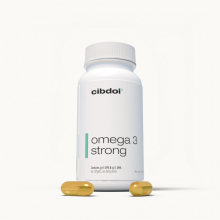Do Almonds Have Omega-3 Fatty Acids?
Published:
Almonds are incredibly nutritious, providing protein, fiber, vitamins, minerals and healthy fats. But when it comes to omega-3 fatty acids, do almonds actually contain these heart-healthy fats?
Contents:
- Omega-3s in Almonds
- Why Omega-3s Matter
- Omega-3 Recommendations
- Top 10 Dietary Sources of Omega-3s
- How to Add More Omega-3s to Almonds
- Omega-3 Intake Without Almonds
- Key Takeaways on Almonds and Omega-3s
-
Frequently Asked Questions
- Are omega-3 almonds better than regular almonds?
- Do soaked, sprouted or roasted almonds have more omega-3s?
- Is almond butter a good source of omega-3s?
- Do almond milks have EPA and DHA omega-3s?
- Are omega-3 levels higher in almond skins?
- Can almonds improve cholesterol levels?
- What’s better, almonds or walnuts?
- The Bottom Line
The answer is yes, almonds do provide small amounts of the plant-based omega-3 fat ALA (alpha-linolenic acid). However, the quantity is minimal compared to better omega-3 sources.
While almonds offer many benefits, they are not a significant source of the beneficial omega-3s EPA and DHA found in fatty fish. This article will cover the omega-3 content of almonds, how much you need, and better dietary sources to meet your daily needs.

Omega-3s in Almonds
Almonds contain very small amounts of ALA omega-3 fatty acids.
A standard 1-ounce (28 gram) serving of raw almonds provides approximately (1):
- Calories: 160
- Protein: 6 grams
- Fiber: 4 grams
- Calcium: 75 mg (8% DV)
- Iron: 1 mg (6% DV)
- ALA omega-3s: 0.1 grams
So a serving of almonds contains just 0.1 grams or 100 mg of the plant-based omega-3 fat ALA.
In comparison, the same 1-ounce serving of walnuts provides 2,500 mg of ALA, a far more significant amount (2).
Almonds provide other beneficial nutrients, but they are not a meaningful source of omega-3 fats compared to other foods. They also don't contain any EPA or DHA omega-3s.
Why Omega-3s Matter
Omega-3 fatty acids provide many important benefits for your health and development. Here’s an overview:
Heart Health
Omega-3s support optimal heart function in the following ways:
- Lower triglycerides — high levels increase heart disease risk (3).
- Reduce blood pressure — omega-3s act as a mild blood thinner (4).
- Prevent plaque buildup — omega-3s reduce fatty deposits inside arteries (5).
- Reduce irregular heartbeats — linked to sudden cardiac death (6).
- Improve cholesterol levels — raising good HDL and lowering bad LDL (7).
Brain Health
Omega-3s also play vital roles in brain function and development:
- Enhance memory and thinking — linked to better cognition in adults (8, 9).
- Help fight depression — associated with reduced depression rates (10).
- Aid fetal brain development — DHA is vital for babies' brain growth (11).
- Support healthy aging — helps prevent cognitive decline (12).
Eye Health
Your retinas have very high DHA omega-3 concentrations. Omega-3s support vision by:
- Reducing macular degeneration — a leading cause of blindness (13).
- Treating dry eye disease — improving tear quantity and quality (14).
- Benefiting babies' vision — DHA intake during pregnancy reduces vision problems (15).
Anti-Inflammatory Effects
Omega-3s have strong anti-inflammatory properties. They can:
- Lower inflammation — reducing inflammatory markers like C-reactive protein (16).
- Relieve joint pain — decreases swelling and stiffness in rheumatoid arthritis (17).
- Help autoimmune issues — shown to benefit lupus, eczema, IBD and psoriasis (18).
Clearly, omega-3s are extremely important for health. But how much do you actually need?
Omega-3 Recommendations
Major health organizations recommend getting at least 250–500 mg per day of the omega-3s EPA and DHA combined for optimal health (19, 20).
Higher intakes of 1,000–2,000 mg daily may benefit those with heart disease, high triglycerides or metabolic syndrome (21).
Pregnant and breastfeeding women need at least 300–900 mg of the omega-3 DHA daily. Children should take in adequate omega-3s based on their age and calorie needs (22).
Vegans and vegetarians are often deficient in omega-3s and may need supplements or fortified foods (23).
As you can see, the 100 mg of plant-based ALA provided by almonds falls well below these daily omega-3 targets.
While almonds offer many nutritional benefits, they would not significantly contribute to meeting your omega-3 needs.
Top 10 Dietary Sources of Omega-3s
To reach optimal omega-3 intake, incorporate more of these foods:
1. Oily Fish
Salmon, mackerel, sardines and herring provide anti-inflammatory EPA and DHA omega-3s. Just 3 ounces (85 grams) of salmon provides over 1,000 mg (24).
2. Fish Oil
Fish oil capsules offer concentrated doses of EPA and DHA. Many provide 500–1,000 mg per serving. Algal oil is a vegetarian alternative.
3. Flaxseeds
Flaxseeds provide 2,300 mg of plant-based ALA omega-3s per ounce (28 grams) (25).
4. Chia Seeds
Chia seeds deliver 5 grams of ALA per ounce, making them the best plant source (26).
5. Walnuts
Walnuts contain 2,500 mg ALA per ounce (28 grams) (2).
6. Soybeans
Edamame, tofu and other soy foods contain ALA. A half-cup of soybeans provides nearly 1,000 mg (27).
7. Hemp Seeds
Hemp seeds offer 1,200 mg of plant-based ALA per ounce (28 grams) (28).
8. Brussels Sprouts
Brussels sprouts have 135 mg ALA per half cup (44 grams) (29).
9. Algal Oil
Algal oil provides vegan preformed DHA and EPA from algae. Use it daily in foods.
10. Beans
Kidney beans, chickpeas and other beans contain ALA. One cup of kidney beans has 430 mg (30).
Prioritizing these omega-3-rich foods is the best way to meet your daily targets.
How to Add More Omega-3s to Almonds
Here are some easy ways to turn almonds into a good source of omega-3s:
- Choose almond butter made with flax or algal oil for extra omega-3s.
- Make homemade almond trail mix with walnuts, pecans, and dark chocolate.
- Add slivered almonds to oatmeal or yogurt with ground flaxseed.
- Combine almonds with omega-3-rich seeds like chia, hemp and flax.
- Bake salmon, almonds, and Brussels sprouts together.
- Enjoy almonds alongside other omega-3 foods like edamame and beans.
- Use almond milk fortified with EPA, DHA or flax oil.
Pairing almonds with other high omega-3 foods ensures you get the benefits of both in one snack or meal.
Omega-3 Intake Without Almonds
You don’t need to eat almonds to get omega-3 fatty acids. There are many other simple ways to meet your daily needs, including:
- Eat fatty fish like salmon 2–3 times per week.
- Take fish, krill, algal oil or flaxseed supplements.
- Snack on a small handful of walnuts, pecans or hazelnuts.
- Add chia and hemp seeds to smoothies, oats and yogurt.
- Use omega-3 cooking oils like canola, soybean and olive oil.
- Look for omega-3-enriched eggs and milk.
- Enjoy omega-3-rich beans like kidney, pinto and black beans.
With some planning, you can easily get enough omega-3s even without almonds.
Key Takeaways on Almonds and Omega-3s
Here are the key points to understand about almonds and their omega-3 fatty acid content:
- Almonds contain just 100 mg of ALA omega-3 fat per serving.
- The small amount does not significantly contribute to meeting daily omega-3 needs.
- Fatty fish, oils, seeds, beans and algae provide far more.
- Aim for at least 250–500 mg daily of combined DHA and EPA.
- Almonds are very healthy, but should be paired with other omega-3 foods.
- Add omega-3-rich nuts, seeds or oils to almonds to increase their content.
Almonds offer many benefits, but they are not a meaningful source of anti-inflammatory omega-3 fats. Focus on eating a variety of omega-3-rich foods instead.
Frequently Asked Questions
Here are some common questions about almonds and their omega-3 fatty acid content:
Are omega-3 almonds better than regular almonds?
Some brands sell almonds enriched with omega-3s from fish, krill, flax or algal oil. If they contain at least 250-500 mg omega-3s per serving, they can help you meet daily targets.
Do soaked, sprouted or roasted almonds have more omega-3s?
No, soaking, sprouting or roasting almonds does not increase their omega-3 content. All preparations of almonds contain just trace amounts.
Is almond butter a good source of omega-3s?
Plain almond butter only provides minimal ALA omega-3s. Look for brands enriched with flaxseed or algal oil for more significant amounts.
Do almond milks have EPA and DHA omega-3s?
Most almond milks only contain trace ALA from almonds. However, some brands add EPA/DHA oils or flaxseed. Check labels and aim for at least 250 mg omega-3s per serving.
Are omega-3 levels higher in almond skins?
Almond skins provide more fiber and polyphenols than the nut itself. However, all parts of the almond contain only minimal amounts of ALA omega-3.
Can almonds improve cholesterol levels?
Almonds may help lower LDL cholesterol and raise HDL cholesterol. But these benefits are likely due to the monounsaturated fats, fiber, phytosterols and other compounds almonds provide, rather than their low omega-3 content.
What’s better, almonds or walnuts?
For omega-3s, walnuts are far superior to almonds. One ounce of walnuts provides 2,500 mg of ALA, compared to just 100 mg in almonds. But both are healthy options.
While almonds offer many benefits, rely on fatty fish, oils, fortified foods and supplements to meet your daily omega-3 needs.
The Bottom Line
Almonds only provide minimal amounts of the plant-based omega-3 ALA and no EPA or DHA. To meet the 250–500 mg daily omega-3 target for optimal health, you would need to eat a large amount of almonds, which isn’t recommended. Instead, focus on eating a variety of omega-3-rich foods like fatty fish, fortified foods and supplements. Enjoy sensible amounts of almonds as part of a balanced diet.















